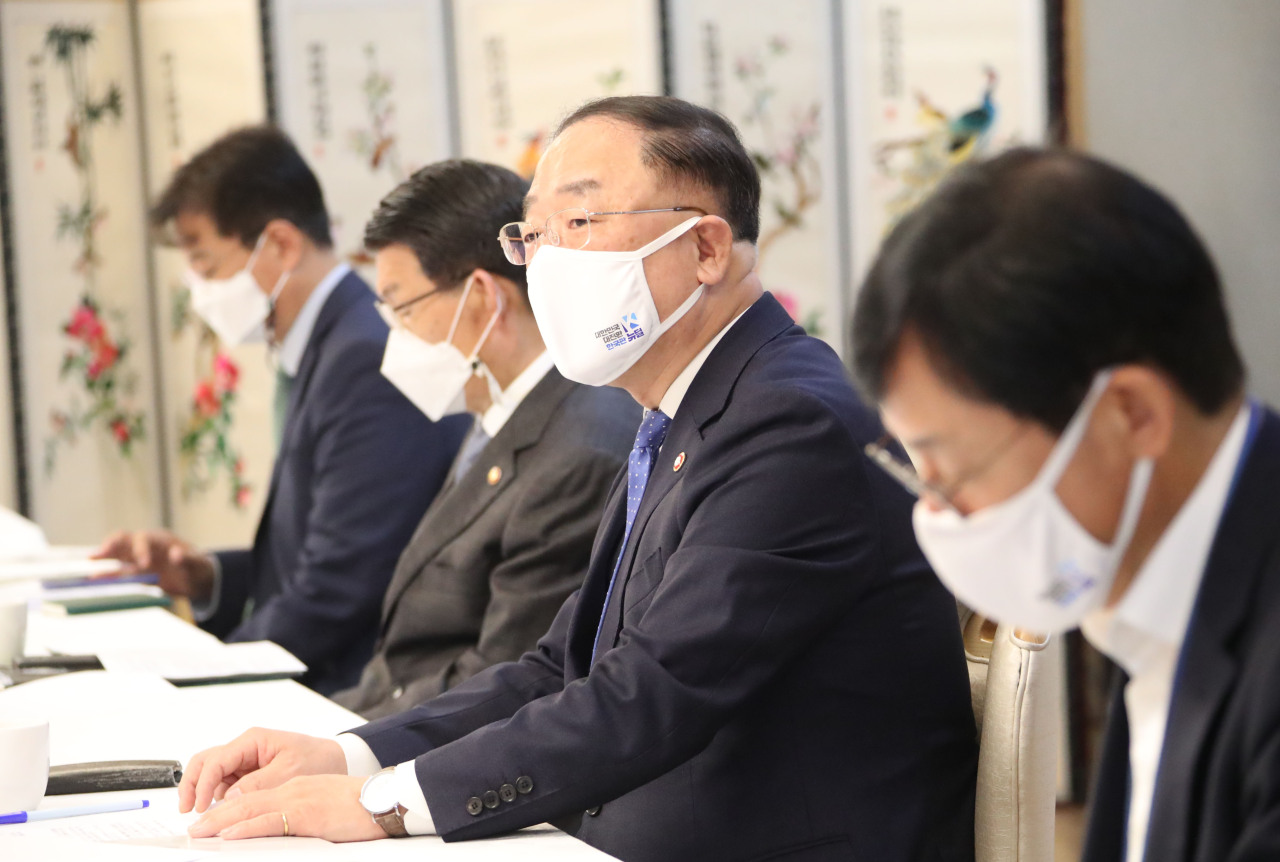South Korea’s government will supply 114,000 public rental units over the next two years in a move to alleviate the shortage of homes offered on “jeonse” leases, especially in Greater Seoul, officials said Thursday.
The latest plan focuses on purchasing existing homes to convert them into public jeonse homes for the underprivileged struggling to find affordable dwellings amid skyrocketing prices. Also, policymakers will offer unoccupied public rental homes to all home seekers, regardless of income, in order to even out the demand.
“(The government) will provide 114,000 rental housing units over the next two years, of which 70,000 will be in the metropolitan area (Gyeonggi Province) and 35,000 will be in Seoul,” said Deputy Prime Minister and Finance Minister Hong Nam-ki in a policy meeting with economy-related ministers.
Some 49,000 units, or over 40 percent of the target volume, will be available within the first half of next year, of which 9,000 will be in Seoul and 24,000 will be in the surrounding Gyeonggi area.
While other midterm supply measures will be added down the road, the top housing policy priority for a while will be to secure a maximum volume of jeonse lease homes, Hong said.
As for the 19,000 housing units that are already slated to be put on the market next year, the government will advance the move-in timeline by a quarter or more.
“These latest actions are expected to bring up the supply volume (of jeonse homes) to the conventional level and largely resolve the (recently mounting) concerns over a drastic supply shortage over the next two years,” the minister said.
The intent of the latest set of policies, according to the fiscal chief, is to maximize the total supply volume, instead of curbing market demand through regulations.
Since the Moon Jae-in administration kicked off in 2017, residential real estate policies have leaned heavily toward loan restrictions and taxation. Pointing to the relentless increase in housing prices, however, many observers say the key is to expand the overall supply volume.
Another factor that boosted the jeonse price hike this year was a set of tenant protection laws, which allowed tenants to unilaterally prolong their jeonse contract periods by another two years and imposed a cap on deposit hikes.
But the regulation discouraged homeowners from putting their properties up for jeonse lease, consequently weighing down on the market supply.
In late October, the government said it would soon unveil additional policies as early as within the month to cool the overheated jeonse market.
The announcement, however, has been stalled for weeks as policymakers struggled for a breakthrough, amid fear that any action to encourage jeonse might also trigger more so-called “gap investment.”
Jeonse is a type of housing lease arrangement unique to Korea, whereby tenants may occupy a residence for an initial two-year period by paying a lump-sum deposit instead of monthly rent.
The system is generally seen as a valid, low-risk residential scenario for those with limited financial resources, but is also leveraged as a speculative tool for landlords in the form of gap investment.
The “gap” refers to the gap between a given asset’s market price and the jeonse deposit. Homeowners or aspiring buyers often maintain or purchase an asset with no more than this amount, as the deposit from tenants would cover a substantial part of the sale price.
By Bae Hyun-jung (
tellme@heraldcorp.com)





![[Exclusive] Hyundai Mobis eyes closer ties with BYD](http://res.heraldm.com/phpwas/restmb_idxmake.php?idx=644&simg=/content/image/2024/11/25/20241125050044_0.jpg)

![[Herald Review] 'Gangnam B-Side' combines social realism with masterful suspense, performance](http://res.heraldm.com/phpwas/restmb_idxmake.php?idx=644&simg=/content/image/2024/11/25/20241125050072_0.jpg)
